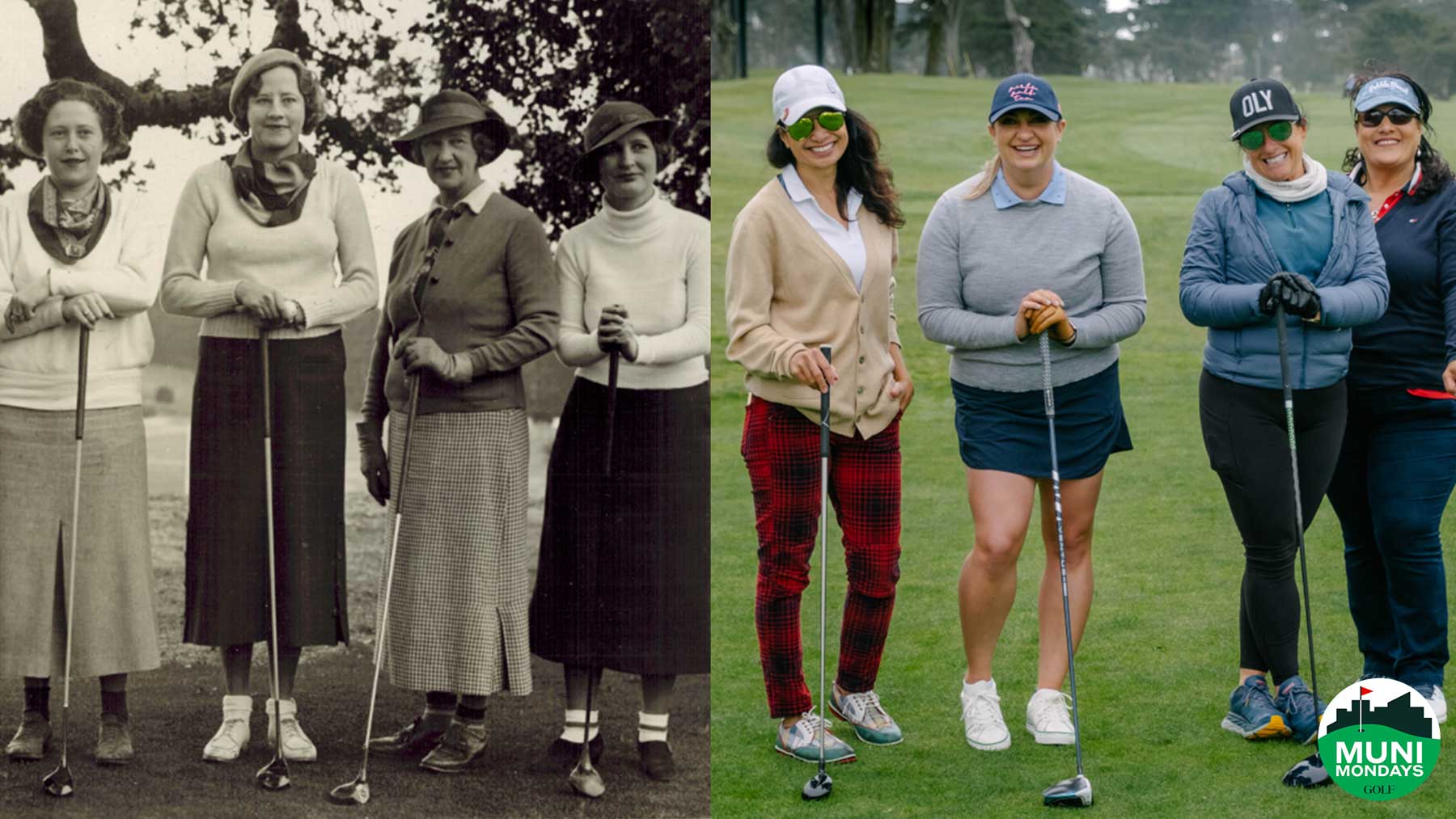If you’ve ever wondered what it might be like to ride in a range-picker without protective meshing, hop in your jalopy and drive into the emerald hills of Oakland, your GPS plotted to Golf Links Road.
This winding route, off Interstate 580, doesn’t just take you to one of California’s quirkiest munis.
It takes you through it, blazing a path across five fairways.
Slow down! Speed up! Wait, now stop!
There’s a Frogger-esque pattern to your progression.
You’ll be watching out for golfers. And for golf balls, with tees shots and approaches whizzing overhead.
In other words, it’s not Magnolia Lane.

But Lake Chabot does have a few things on Augusta.
Its fees are bargain basement. Its vibe is easygoing. It’s also one of the rare courses anywhere that give you a crack at — get this—a par 6.
Judging from this less-than-classic design detail, you probably wouldn’t peg Lake Chabot as a product of the Golden Age of golf course architecture.
Yet it is.
It opened in 1923, and its author was William Locke, the same Scottish-born designer who had a hand in the original routing of the Cal Club, just south of San Francisco, and also left his imprint on nearby Lake Merced Golf Club, a former host of the Swinging Skirts LPGA Classic.
At Lake Chabot, Locke was given tricky land, marked by stark elevation changes.
Architecture snobs would surely curl their lips at the severity of some of the slopes.
But those people can be killjoys.
This course has character.
It has drawn its share of characters, too.
Local hero Tony Lema played here growing up and loved it well enough that after winning the 1964 British Open, he put the trophy on display at Lake Chabot.
Among those who eyeballed it was Oakland native and future California State Amateur champion Gary Vanier, who learned to play at Lake Chabot as a kid in the 1960s.
“It was never a long course, but you had to be precise,” says Vanier, who enjoyed a seven-year run on the PGA Tour in the 1970s. “That’s where I really learned to use my wedges.”
In 1968, leaning on a mean wedge game and his local knowledge, Vanier won the first of his several titles in the Oakland City Championship, a now near-century old event that is still held at Lake Chabot today (the 98th playing was this past weekend).
On non-tournament weeks, the course, like many munis, attracts a steady crowd of loyalists, their demographics a reflection of Oakland, one of the most diverse major cities in the country.

Lake Chabot is where you’ll find the likes of Tommy Scales, whom everyone calls “Coach” because he’s been one for so long, first at the high school level and now as an instructor for Ace Kids Golf, a junior program, based at Lake Chabot, that introduces golf to children who might not otherwise get access to the game.
Scales is 87, and he’s been shooting his age for nearly 20 years at Lake Chabot. He’s been playing the course for even longer, having logged his first rounds here in the early 1970s, when he settled in California after multiple tours of duty in Vietnam.
Golf was his respite from traumatic wartime memories. And Lake Chabot was the kind of place that offered added comfort.
“I was one of those courses where, as a Black man, I could show up and no one would bat an eye,” Scales says.

Starting in the late 1980s, and for nearly two decades, Lake Chabot was managed by the ex-NFL great Raymond Chester, former tight end of the Oakland Raiders. But in 2006, Chester stepped down, and the course entered a state of suspended animation as the city looked for someone else to run it. Familiar muni issues plagued it. Tight city budgets. An outdated irrigation system. Dwindling participation. There was talk of selling real estate around the grounds to help pay the bills.
Only a year or so prior, a plan for a public-private partnership had been floated to transform Lake Chabot into a high-end resort course, an amenity for a luxury hotel in Oakland. But that idea had died in the face of fierce neighborhood opposition.
Meantime, the golf course languished.
In more recent years, though, it’s been on the upswing. Its greens are now kept smooth, its fairways firm and fast.
It remains plenty quirky.
The first tee and the driving range are crammed so close together that a fence stands between them as a precaution. On the nosebleed par-3 ninth hole, which plunges some four stories from tee to green, a bench behind the putting surface is enclosed with a wire cage: that’s where you wait in safety when you wave other players up.

On the back nine, the course rises up, up, up to its high point, giving way to sweeping views of San Francisco Bay and the San Francisco skyline. You can understand why they thought of building a resort here.
Luckily, they didn’t.

The offbeat charms of Lake Chabot are still accessible to all. That includes the 18th hole, a 673-yard double-dogleg that plunges down a double-black diamond slope to a green perched close to the road that you arrived on.
At Lake Chabot, they say that it’s the only par 6 west of the Mississippi. Whether that is true or not doesn’t really matter. Either way, the course is one of a kind.
This is part of our Muni Monday series, spotlighting stories from the world of city- and county-owned golf courses around the world. Got a muni story that needs telling? Send tips to Dylan Dethier or to munimondays@gmail.com and follow Muni Mondays on Instagram.










